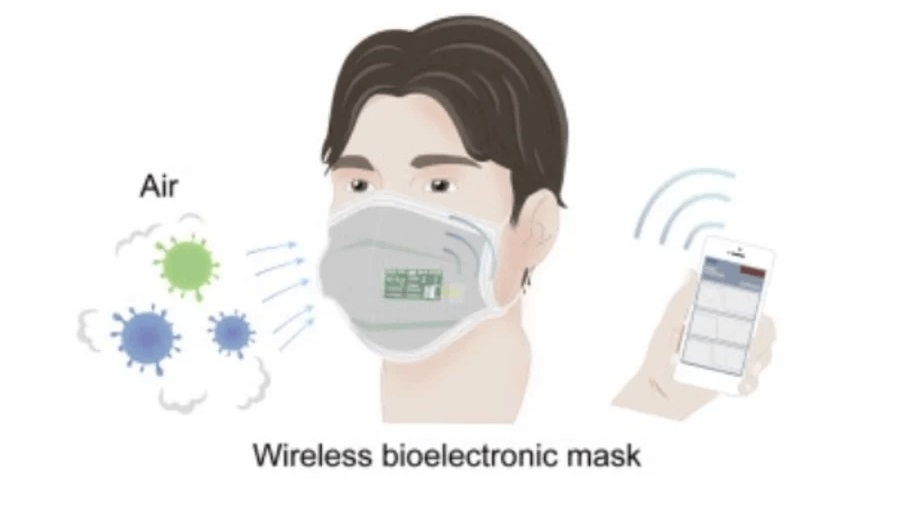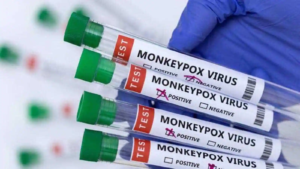Scientists discover an intelligent face mask that detects Covid, flu, & other viruses and alerts you on mobile in 10 minutes

Researchers have created a face mask that can identify common respiratory viruses that are present in the air as droplets or aerosols, such as influenza and COVID-19. The incredibly-sensitive face mask may alert users via their mobile devices within 10 minutes if specific viruses are present in the air.

Previous research has shown face mask wearing can reduce the risk of spreading and contracting the disease. So, we wanted to create a mask that can detect the presence of virus in the air and alert the wearer,” says Yin Fang, the study’s corresponding author and a material scientist at Shanghai Tongji University.
He further said, “Our mask would work really well in spaces with poor ventilation, such as elevators or enclosed rooms, where the risk of getting infected is high,”.
Also, If a new respiratory infection appears in the future, they can simply alter the sensor’s design to account for it”.
The team’s next goal is to optimize the design of the polymers and transistors in order to reduce the detection time and significantly boost the sensor’s sensitivity. Additionally, they are developing wearable medical equipment to treat ailments including cancer and cardiovascular problems.
Aptamers, a kind of synthetic molecule that can recognize particular proteins of pathogens like antibodies, were used by the team to create a tiny sensor. The team changed the multi-channel sensor in their proof-of-concept design so that it could simultaneously recognize the surface proteins on the SARS-CoV-2, H5N1, and H1N1 viruses.
Spraying the mask with liquid and aerosols containing viral surface proteins within a container that was tightly closed allowed Fang and his colleagues to test the mask. According to Fang, the volume of liquid created by coughing or talking is far more than the 0.3 microliters of liquid carrying viral proteins, which is between 70 and 560 times smaller than the volume of a single sneeze. Even smaller quantities of viral proteins elicited a response from the sensor.
Once the aptamers link to the target proteins in the air, the associated ion-gated transistor will boost the signal and alert the wearers via their phones. The mask swiftly detects even minute levels of airborne viruses thanks to a novel and very sensitive device called an ion-gated transistor.
“Currently, doctors have been relying heavily on their experiences in diagnosing and treating diseases. But with richer data collected by wearable devices, disease diagnosis and treatment can become more precise,” Fang says.
(Live mint inputs)






